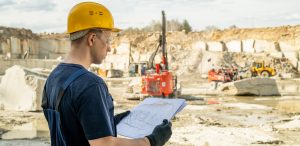Tailgate Toolkit Program Introduced To Defend Workers Against Opioid Crisis

VICTORIA – Those who believe Vancouver Island is in a “housing bubble” need to re-adjust their perspective.
The surge in construction that continued throughout the COVID Pandemic since the industry was classified as an essential service by the government shows no signs of abating. In fact, the only thing holding back construction, it seems, is sluggish and inefficient developmental services within municipalities – something the province has taken note of.
Rory Kulmala, CEO of the Vancouver Island Construction Association, says Josie Osborne, Minister of Municipal Affairs, is apparently attempting to get municipalities to be quicker and more responsive when it comes to issuing development and building permits. “All of that stuff has slowed right down, certainly on Vancouver Island and the Sunshine Coast,” he notes.
Despite such clogging, construction continues to surge forward.
“It’s one of those things where a couple of years you anticipated a slowdown by about now, as we typically have five to seven year trends where they start to relax again,” he says. “But even through COVID, with the housing needs and the current building environment, we‘re continuing at such a high level. There is no bubble.”

RORY KULMALA
Kulmala points out that within the Capital Regional District, the vacancy rate for housing has been around zero for the past several years. Now, even with the amount of building that has been completed, the vacancy rate has just crept over one percent.
“So if the rental market is experiencing less than one percent vacancy, we’re probably seeing the home ownership aspect of the market being just as stressed. There are still bidding wars on houses,” he adds.
Accompanying the continued increase for housing, meaning construction companies are working at full capacity, there is an even more heightened need for more trades people.
“On one front we’re lucky as an industry, since throughout the pandemic we’ve been deemed an essential service,” Kulmala observes. “But what we’re also finding are stresses in regards to labour. We’re definitely short of skilled labor. That’s a product of people retiring, not bringing enough youth in, as well as immigration having been affected, and migration. We’re not able to attract as many new people as we need.
“The high cost of housing in Victoria means moving to the South Island is a real challenge,” he adds. “The cost of housing is very expensive here, and workers across the nation will probably stay where they are because of that, plus the fact the demand for housing is strong across north America, so they can stay where they are and still do well.”
Kulmala considers the construction industry fortunate for being able to continue during the pandemic. That also caused everyone involved to make adjustments to health protocols to meet provincial requirements, including installing more sanitary and washing stations on job sites.
“We’ve done an exceptional job to keep our workers safe,” he notes.
While the industry as a whole is successful and growing, there is increased concern about an increase in recreational drug use amongst employees. With workers within the sector earning high wages, and many being single with plenty of disposable income, they are being targeted by drug dealers looking to expand their destructive market.

There are 25,784 Construction Companies in BC, 92 per cent of which have less than 20 employees. The Construction sector employs approximately 212,800 people in BC
To combat that, VICA has developed a Tailgate Toolkit Program, a harm reduction initiative focusing on the opioid crisis by specifically addressing construction workers – who sadly are becoming amongst the highest percentage of opioid related deaths in the province.
“A number of years ago as the opioid crisis grew, VICA got involved in providing some training about what was happening in our community,” Kulmala recalls, adding they recognized a need for resources to educate everyone about the threat.
Just over a year ago, the Vancouver Island Health Authority, now Island Health, reached out to develop a specific program for the construction sector. A few years earlier, VIHA had released a report about illicit drug overdose deaths in BC and it revealed some fairly startling facts.
Kulmala points out that although the industry is being targeted, it’s not a construction-only problem. It’s a societal one, and a key to battling it is to reduce the stigma associated with drug use.
“Often, the catalyst for behaviour when it comes to addiction is that it comes from mental problems, dependencies for pain reduction, and through research we did, the stigma and bravado of men within the industry were things that resonated,” he notes.

Focus groups included people who had or were exposed to dependency were helpful in identifying contributors to drug use.
“We had some very candid conversations about that, and what led to the work hard, play hard life, and that included working through pain,” he notes. “It doesn’t make them bad people, or directly correlate to who they are as people.”
The Tailgate Toolkit Program is set up to be communicated during regular “tailgate talks” that typically focus on safety on the job site. It is aimed at raising awareness about the issue, reduce the stigma surrounding it, and helping guide those affected to helpful resources.
“This is really where the program gets to the front line of workers,” Kulmala states. “The tailgate talk is a safety talk that should be on every construction site, so adding this is the same as reminding people to wear their equipment and boots.
“The toxic drug crisis is taking more lives than workplace physical harm is. So, looking at it in that light, recognizing that 81 per cent of these fatalities are male workers and our demographic aligns with that. 63 per cent of those died in private residences, which means they have means and they have jobs. It paints a very compelling picture.”
VICA spent the first half of this year doing research and they’re now delivering the program, which includes training supervisors and initiating Tailgate Talks. Hundreds of Vancouver Island construction workers have already been exposed to the program, and VICA has received additional funding to share their program with other regions throughout British Columbia, including Prince George, Kelowna and the Lower Mainland.
“We have to change the language we use and reduce the stigma. With men, we don’t talk about our problems. We also have a problem where men can’t have a problem without being criticized. We can’t bury our heads in the sand,” he says. “You can bet there’s going to be a campaign if somebody falls off a building so that they don’t’ do it again. We have to do that with the toxic drug crisis.
“We’re preaching to people to be aware, and to not be afraid if they know somebody who is in trouble. We’re a resource where we can help guide people, and if workers don’t want to go through their employer, they can go through our Harm Team to connect with the necessary resources.”


